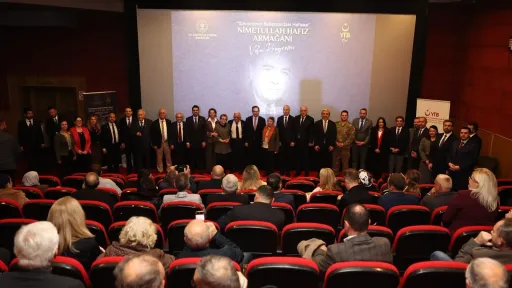Mostar Bridge marks 32 years since its wartime destruction

The Mostar Bridge, destroyed on Nov. 9, 1993, by Croatian artillery during the Bosnian War, remains one of the world’s most significant cultural landmarks for its architectural and historical value.
An important work of Turkish and Islamic architecture, the bridge was built in 1566 by Mimar (Architecture) Hayreddin, a student of the famed Ottoman architect Mimar Sinan. Spanning the Neretva River in the city of Mostar, the bridge gave the city its name and served as a symbol of unity between Bosniaks and Croats for nearly five centuries.
On Nov. 8, 1993, Croatian Defense Council (HVO) artillery units began heavy shelling of the city. The next morning, the centuries-old bridge collapsed into the Neretva River at 10:16 a.m. The destruction, captured on video, drew international condemnation and became one of the most haunting images of the Bosnian War.
The bridge had been widely admired for its elegant single-arch design, rising 24 meters (79 feet) above the river at its highest point. Built from finely cut stone, it connected the two sides of the city and stood as a testament to Ottoman engineering and craftsmanship.
Evliya Çelebi, the 17th-century Ottoman traveler, praised the structure in his writings, calling it “unique” and describing it as the “necklace of the Neretva.” Local legend holds that during the Ottoman era, muezzins would call the adhan from a height equal to the bridge’s arch, and that a Yugoslav pilot once flew a small plane beneath it - a feat never repeated.
Beyond its architectural beauty, the Old Bridge was also known for the traditions that surrounded it. For generations, daring young men from Mostar, regardless of ethnicity or religion, have leapt from the bridge into the river below to prove their courage - a custom that continues today.
For residents of Mostar, the bridge’s destruction remains a painful memory, remembered as a “dark day.” Yet its reconstruction became a powerful symbol of reconciliation and hope. With support from Türkiye, several other countries, and international organizations, the bridge was rebuilt true to its original form and reopened in 2004 with a grand ceremony.
In 2005, the Mostar Bridge and the surrounding historic area of Mostar were inscribed on the UNESCO World Heritage List. Today, the site attracts thousands of tourists each year and stands as a lasting symbol of peace and coexistence in Bosnia-Herzegovina.
Each year on Nov. 9, commemorations are held to mark the bridge’s destruction and to honor its enduring message of unity and resilience.
AA

